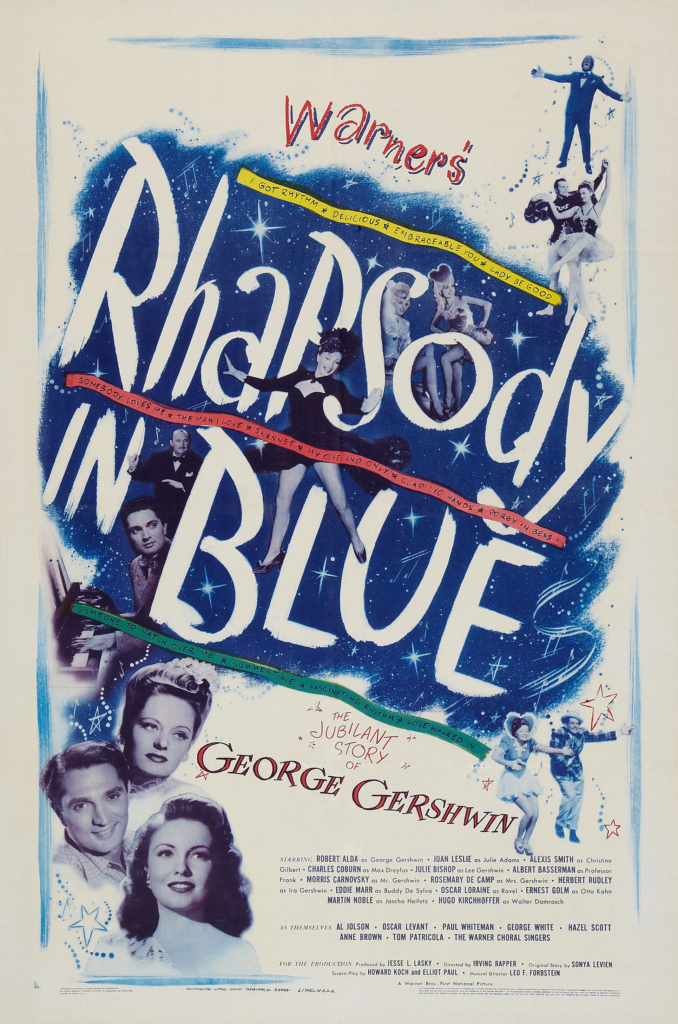February 12 marks the 100th birthday of Rhapsody in Blue. Via NPR, the daily newsmagazine “1A” is re-airing my “Gershwin Moment” documentary from last February; it highlights my favorite Rhapsody in Blue recording, by Alexander Tsfasman and Gennadi Rozhdestvensky (Moscow, 1960). And I’m taking part in additional Gershwin radio features on NPR and BBC-3. As the pianist Benjamin Pasternack once had occasion to remark to me: “It’s the most beloved piece in the American concert repertoire.”
But, historically, it may also be the most reviled. When I wrote Classical Music in America: A History of Its Rise and Fall (2005), among my most startling discoveries was “the Gershwin Threat.” In the classical music community, prominent musicians who spoke up for Gershwin were invariably foreign-born – a long list including Schoenberg, Klemperer, Rachmaninoff, and Ravel. American-born classical musicians typically disparaged Gershwin as a dilettante interloper. The larger picture here is the Jazz Threat – an antipathy to jazz being one of the defining features of interwar American classical music. In fact, the Gershwin Threat is an inexhaustible topic – and it apparently remains itself inexhaustible.
A much noticed Jan. 26 article in the New York Times, by the estimable jazz pianist Ethan Iverson, was headlined: “The Worst Masterpiece: ’Rhapsody in Blue’ at 100.” Iverson calls Gershwin’s Rhapsody “naïve and corny.” His grievance is that the “promise” of Rhapsody in Blue “hasn’t been honored.” Gershwin’s “bold and obvious proposal” was that America’s vital Black vernacular be merged with classical genres. And it never really happened.
He’s correct about that – our concert composers have mainly squandered the Black musical motherlode – but Gershwin (of all people) is not to blame. He was the great hope, not the great obstacle. Iverson cites the “reception history” of Rhapsody in Blue – but that history is obviously unknown to him. What’s salient here isn’t that Rhapsody “clogged the arteries” of American symphonic practice; what’s salient is that it was shunned. Just check out the subscription-concert repertoire for the major American orchestras all the way to the turn of the 21t century – with the exception of the New York Philharmonic, they all ghettoized Gershwin as a marginal “pops” composer. A typical example: the Boston Symphony first performed Rhapsody in Blue on subscription in 1997.
Did Rhapsody in Blue exert a baneful influence on American composers? No – it exerted virtually no influence at all. They denigrated it as amateur hackwork. The most notable exception, if it can be called that, was Aaron Copland’s Piano Concerto of 192 , conceived as a modernist “improvement” on Gershwin’s Rhapsody in Blue and Concerto in F. And that’s how Paul Rosenfeld influentially extolled it — for fixing Gershwin’s “hash derivative” efforts. Roy Harris, in comparison, urged Copland to ignore jazz altogether. You have to look abroad – to, e.g., Ravel’s divine Piano Concerto in G – to find a major composer for whom Gershwin was a catalyst for memorably assimilating the jazz influence. In the US, the exception that proves the rule was Gershwin’s own Porgy and Bess – itself a work still threatening and misunderstood in the US (but not abroad).
Gershwin’s followers, Iverson complains, had “terrible rhythm” (he singles out Oscar Levant). But Gershwin was himself a master stride pianist. He was intimate with Harlem. He hung out with James P. Johnson and Luckey Roberts.
The Gershwin Threat was many things. It stigmatized Black America as declasse. It symptomatized New World provincialism, an exaggerated quest for pedigree. It never wholly died.
***
I write about the Gershwin Threat at length in “On My Way” – the Forgotten Story of Rouben Mamoulian, George Gershwin, and “Porgy and Bess’’ and Dvorak’s Prophecy and the Vexed Fate of Black Classical Music.
And here’s a Listening Guide for The Gershwin Moment on 1A:
00:00 Rhapsody in Blue, as recorded in Soviet Russia in 1960
4:12 — John McWhorter on resituating Gershwin in the story of American music
8:55 — Ruby Elzy sings “My Man’s Gone Now” for the departed composer
13:40 –Kirill Gerstein plays “I Got Rhythm”
14:30 — Gerstein performs and discusses his improvised cadenza in the Gershwin Piano Concerto in F
23:33 — Traci Lombre on Gershwin and Black America
26:20 — Gershwin plays “I Got Rhythm”
27:40 — Nina Simone sings “I Love You Porgy”
29:50 — “Music by Gershwin” on the radio (1934)
35:10 — Mark Clague on An American in Paris — taxi horns and sonata structure (with the University of Michigan Orchestra conducted by Kenneth Kiesler)
40:40 — What if Gershwin had lived as long as Copland (with comments by Mark Clague)


